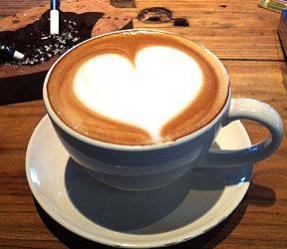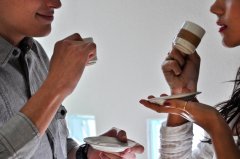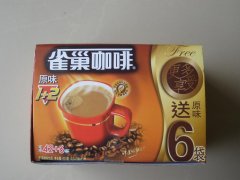Italian latte: the ultimate blend of coffee and milk

For lattes, our country can be said to be the most loyal fans of instant coffee and instant coffee drinks as well as offline consumers. Latte "is the transliteration of Italian" Latte ", and CoffeeLatte is a kind of fancy coffee. The perfect blend of coffee and milk is the Italian latte with pure milk and coffee, while the American latte replaces part of the milk with milk foam. Different lattes are cooked and tasted the same way.
Where did the latte come from-- the origin of the latte the famous phrase "I'm not in the cafe, I'm on my way to the cafe" was said by a musician in Vienna. The air of Vienna is always filled with the smell of music and Latte coffee. The first person to add milk to his coffee was Kochsky of Vienna.
This is the story of 1683. This year, the Turkish army attacked Vienna for the second time. The then Emperor Augustus I of Vienna had an offensive and defensive alliance with King Augustus II of Poland, and as soon as the Poles heard the news, reinforcements would arrive quickly. But the question is, who will break through the siege of the Turks to deliver letters to the Poles? Kochsky, a Viennese who had traveled in Turkey, volunteered to deceive the besieged Turkish army in fluent Turkish, crossed the Danube and moved to Poland.
Although the Ottoman army was brave and skillful, it retreated hastily under the attack of the Polish and Viennese armies, leaving behind a large number of military supplies outside the city. among them are dozens of sacks of coffee beans-coffee beans that the Muslim world has controlled for centuries that have refused to flow out so easily into the hands of Viennese.
But the Viennese don't know what it is. Only Kochsky knows that this is a magical drink. So he asked for dozens of sacks of coffee beans as a reward for breaking through the siege, and used the trophies to open a cafe in Vienna, Blue bottle. At first, the business of the cafe was not good. The reason is that Europeans do not like to drink coffee grounds with coffee grounds as the Turks do. So the clever Kochsky changed the recipe, filtering out the coffee grounds and adding a lot of milk-this is the original version of the latte that is common in cafes today.
The main ingredient of a latte is espresso (Espresso). Espresso is a type of coffee with a strong taste by brewing coffee with extremely hot but non-boiling hot water under high pressure and grinding it into a very fine coffee powder.
Semi-automatic espresso machine-to achieve a cup of espresso (espresso), the most important factor is to stabilize the pressure and temperature. Sometimes those who encounter half a bottle of water will say that this term is out of date, and now the best semi-automatic coffee machine is variable pressure. Indeed, since 2004, the real variable pressure coffee machine has been born, gradually spread all over the world, and began to enter China in recent years. But the pressure swing coffee machine is not random, its pressure control requirements are far greater than the traditional semi-automatic Italian coffee machine, coupled with the price of more than a hundred thousand is not affordable to the average family.
Italian latte-Caff è Latte requires a small cup of Espresso (Italian coffee word) and a cup of milk (150mm 200ml). Lattes have more milk and less coffee, which is very different from Cappuccino (cappuccino). The latte is as simple as pouring nearly boiling milk into a freshly made espresso. In fact, there is no fixed rule on how much milk is added, and it can be freely mixed according to individual taste.
If you add some frothy cold milk to the hot milk, it becomes an American latte. Starbucks American lattes are made in this way, with espresso at the bottom, milk heated to 60 to 65 ℃ in the middle, and cold milk foam of no more than half a centimeter.
Caramel latte-there is another kind of latte called caramel latte. It is made from food-grade sugars such as glucose, fructose, sucrose, inverted sugar, maltose syrup, corn syrup, molasses, starch hydrolysates, etc., heated (or pressurized) at a high temperature above 121℃, and further treated.
If you do not put hot milk, but directly decorate two tablespoons of milk foam on the Italian espresso, it becomes the macchiato coffee called Espresso Macchiato by the Italians.
Latte in China-latte is the most familiar variety of Italian coffee in China. It is fancy coffee with equal proportion or even more milk added to the thick and full-bodied ESPRESSO. With the warm seasoning of milk, the originally sweet and bitter coffee becomes smooth, sweet and rich. Even people who are not used to drinking coffee can't compete with the taste of Fangmei latte.
With the development of latte, fancy latte is undoubtedly the most popular one. Because there are beautiful flowers in the fancy latte coffee cup, the production process is more complicated, so it is favored by modern young people.
Important Notice :
前街咖啡 FrontStreet Coffee has moved to new addredd:
FrontStreet Coffee Address: 315,Donghua East Road,GuangZhou
Tel:020 38364473
- Prev

What kind of instant coffee drinks do coffee fans like?
Why did the editor talk about this problem? In the beverage market, ready-to-drink coffee beverages have become the mainstream type of beverages. Because they are easy to carry and taste mellow, many consumers are interested in coffee beverages, but in fact, for consumers, maybe they need some more original coffee drinks. It is understood that some people have formed the habit of drinking coffee every day.
- Next

Which brand of instant coffee is good? Ranking of coffee brands in the world
As for the choice of instant coffee, I think everyone has a favorite brand of instant coffee, but which brand of instant coffee is the best? Which kind of instant coffee is the most cost-effective? Let's take a look at the eight best-selling instant coffee brands. Introduction to TOP1 Nestle: Nestle invented the world's first instant coffee Nestle coffee in 1938, and soon became popular all over the world.
Related
- Beginners will see the "Coffee pull flower" guide!
- What is the difference between ice blog purified milk and ordinary milk coffee?
- Why is the Philippines the largest producer of crops in Liberia?
- For coffee extraction, should the fine powder be retained?
- How does extracted espresso fill pressed powder? How much strength does it take to press the powder?
- How to make jasmine cold extract coffee? Is the jasmine + latte good?
- Will this little toy really make the coffee taste better? How does Lily Drip affect coffee extraction?
- Will the action of slapping the filter cup also affect coffee extraction?
- What's the difference between powder-to-water ratio and powder-to-liquid ratio?
- What is the Ethiopian local species? What does it have to do with Heirloom native species?

